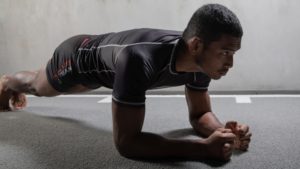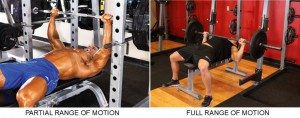Have you ever grappled with a seemingly unassuming training partner that seemed to be extremely strong and dish out tons of pressure?
“It’s important to realize in MMA and Jiu-Jitsu a great deal of your strength in sport comes from technique itself. Learning how to use your bodyweight properly, to manipulate leverage as if it were a weapon, to use your opponent’s momentum against him, has the ability to exponentially increase how strong you feel to your opponent in MMA. This is why someone can appear relatively weak if you ever watch them lift weights or workout but feel very strong and overpowering on the mat.”
– @coachjoeljamieson
What many people call “Mat strength” is actually high levels of isometric strength. An isometric contraction is where a muscle produces force however there is no change in length.
Traditional resistance training such as lifting weights is external training, ie manipulating a weight or resistance via concentric / eccentric contraction to appropriately stress muscles for adaption.
Internal training would be by using isometric contractions, self imposed to create adaptions. Internal training is extremely beneficial for training range of motion specific movements, which is exactly what is Jiu-Jitsu.
What is the best way to increase isometric strength for Jiu-Jitsu?
All grapplers should include specific isometric exercises in their strength program. How to do so? By applying maximal force to a stationary object or against a non-moving limb. A good example of this is the plank or a wall sit. This type of exercise is a great way to build strength and endurance and will give you a big advantage on the mats.

To begin training your isometric strength, you can start with the simple exercises. Planks and wall will build your foundation. Once those 2 have been mastered those, it’s time to go more serious exercises.
Bench-press isometrics consists of holding the barbell at the top of the lift for a good 10-15 seconds and then releasing. You can squeezing a resistance band or a medicine ball held between your legs which will also provide great isometric training.

Isometric Jiu-Jitsu Drills
When you’re drilling Jiu-Jitsu guard passes, instead of just passing, you can try to hold yourself in the guard pass position and applying pressure for 10 to 15 seconds before releasing. A good example of this is passing using the body lock pass. Do the pass as you usually then ask your opponent to stiff arm frame and then you move your legs side to side going around the frame and squeezing their hips.
For the gi, you can do partner hangs, where you grab onto a partner’s BJJ gi and hold the position for 10 to 15 seconds before letting go. This will give you insane grip strength.
Train Smart
If you want to develop serious grappling strength, then isometric will you the biggest bang for your buck. It also will increase your endurance for Jiu-Jitsu.
Rolling Strong combines scientific exercises and routines specifically geared towards grappling.
Phil Daru is a performance coach for over 200 Elite Level Fighters in all aspects of combat sports.
Learn a comprehensive approach that covers everything from proper warmups to exercises designed to improve your guard!
The post The Secret To Insane Grappling Strength: Isometric Training appeared first on Bjj Eastern Europe.

